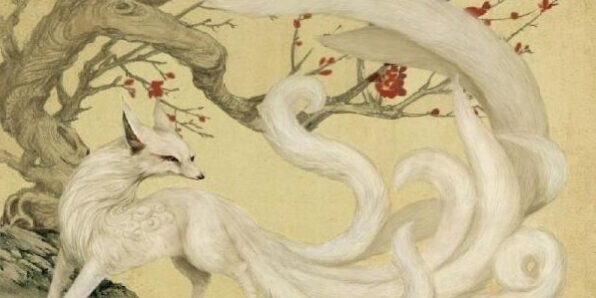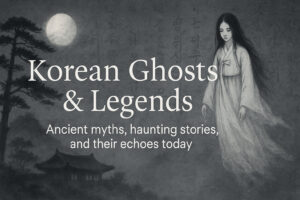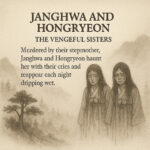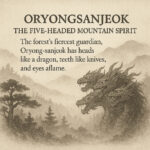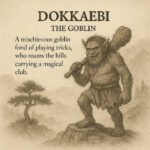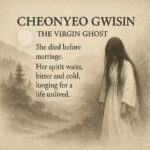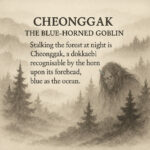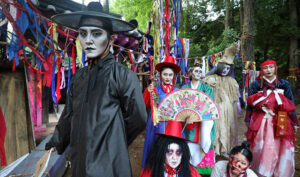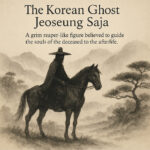Ghosts, Goblins & Legends: Korean Halloween Stories
🌑 Origins of Korean Ghost Stories
Unlike Halloween in the West, Korea’s “ghost season” is rooted in shamanism, Buddhism, and Confucian traditions. Death without justice or proper rites was believed to create restless souls (gwisin). Families relied on rituals (jesa, shamanic rites) to appease these spirits. Over time, these stories became part of Korea’s oral folklore, passed down through generations by elders, storytellers, and shamans.
- Janghwa & Hongyeon
- Jangsanbeom
- Oryongsanjeok
🧙 Transmission through the Ages
- Oral tradition: Tales whispered in villages during autumn nights, often to warn children against danger.
- Shamanic rituals: Some legends, like Cheonyeo Gwisin or Mul Gwisin, were tied to rituals of cleansing and appeasement.
- Literature & theater: The pansori and old folktale compilations recorded these ghost stories, keeping them alive.
- Film & K-drama: Modern reinterpretations gave them a new life, mixing horror with romance or tragedy.
- Dokkaebi
- cheonyeo gwisin
- Cheonggak
📍 Where to Encounter These Legends Today
- Namsangol Hanok Village (Seoul): Ghost tours and folklore storytelling during Halloween and summer.
- National Folk Museum of Korea: Exhibits and events on Korean myths, often highlighting ghosts and dokkaebi.
- Korean Folk Village: Step into a living museum where myths meet reality through folk performances, eerie legends, and playful dokkaebi wandering among the hanoks.
- Local festivals:
- Jinju Namgang Yudeung Festival: lanterns sometimes depict legends and spirits.
- Jecheon International Music & Film Festival: often screens folklore-inspired horror films.
- Theme parks: Lotte World & Everland incorporate gwisin, gumiho, and dokkaebi into their Halloween horror attractions.
📺 Legends in Pop Culture
- Gwisin & Cheonyeo Gwisin: appear in countless dramas (Arang and the Magistrate, Hotel Del Luna).
- Gumiho: from horror folklore to romantic fantasy (My Girlfriend is a Gumiho, Tale of the Nine Tailed).
- Jeoseung Saja (Reaper): became iconic thanks to Goblin (Guardian: The Lonely and Great God).
- Bulgasal: reimagined in Bulgasal: Immortal Souls (tvN/Netflix, 2021).
- Dokkaebi: once feared, now mascots in commercials, sports, and even K-pop MVs.
✨ Why They Still Matter
These stories reveal Korea’s relationship with death, justice, and the unseen. Today, they bridge heritage and pop culture: from whispers in mountain villages to neon-lit dramas, the legends continue to haunt, entertain, and inspire.
- Gumiho
- Saja
- Gwisin

